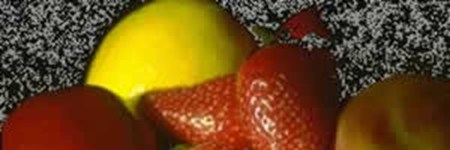Chronic renal failure diet
DEFINITION
The aim of the Chronic Renal Failure Diet is to:
- Reduce the level of protein in the diet to minimise production
of waste products which the kidneys then have to excrete. - Provide adequate calories to meet energy requirements.
- Maintain adequate vitamin intake.
DESCRIPTION
In some cases, the diet will also control the intake of sodium
and potassium.
and potassium.
NOTE:
The precise level of protein, sodium and potassium which you
require should be worked out by your Doctor or Dietitian according
to the results of your blood tests. These levels should be reviewed
regularly. The following diet plan supplies approximately 40g
protein, 40-60mmol sodium and 50-60mmol potassium.
require should be worked out by your Doctor or Dietitian according
to the results of your blood tests. These levels should be reviewed
regularly. The following diet plan supplies approximately 40g
protein, 40-60mmol sodium and 50-60mmol potassium.
DIET SHOULD BE HIGH IN
- Complex carbohydrates which contain little protein, for example
potato, sweet potato, vegetables and rice.
DIET SHOULD BE ADEQUATE IN:
THE DIET SHOULD BE CONTROLLED IN:
- PROTEIN such as meat, poultry, fish, seafood, dairy foods, peas
and beans, nuts, soy bean products and eggs. It is best to choose
good quality protein foods which provide the full range of
essential amino acids. Vegetable-based proteins must be combined
together in a meal to obtain complete protein, for example, peas
and beans and cereal as in refried kidney beans and corn tortillas
or baked beans on toast.
Aim for a daily intake of: 1 egg, cooked any way + 30g meat,
chicken for lunch + 60g meat, chicken or for dinner.
chicken for lunch + 60g meat, chicken or for dinner.
Protein foods are interchangeable, for example,
30g meat
= 45g fish, fresh or tinned
= 250mls milk
= 75g cottage or ricotta cheese
= 60g nuts
= 40g peanuts
= 125g yoghurt
= 140g cooked legumes
- SODIUM content if indicated.
NOTE
The following sample meal plan avoids the use of highly salted
foods and assumes that no salt or salty condiments are used in
preparing meals. This would be described as a “No Added Salt” diet
or “Moderate Sodium Restriction”. Levels in sodium content could be
achieved by using special “No Added Salt” or “Low Salt” foods and
by controlling how much you eat of foods which naturally contain
some sodium. Please seek professional help for detailed dietary
advice if this applies to you.
The following sample meal plan avoids the use of highly salted
foods and assumes that no salt or salty condiments are used in
preparing meals. This would be described as a “No Added Salt” diet
or “Moderate Sodium Restriction”. Levels in sodium content could be
achieved by using special “No Added Salt” or “Low Salt” foods and
by controlling how much you eat of foods which naturally contain
some sodium. Please seek professional help for detailed dietary
advice if this applies to you.
- POTASSIUMcontent if indicated by blood tests.
To lower potassium intake, avoid dried fruit, nuts, wholegrain
cereals and bread, dried peas, beans and lentils, golden syrup,
treacle, molasses, maple syrup, brown sugar, chocolate, cocoa
powder, liquorice, milo, brewer’s yeast.
cereals and bread, dried peas, beans and lentils, golden syrup,
treacle, molasses, maple syrup, brown sugar, chocolate, cocoa
powder, liquorice, milo, brewer’s yeast.
SAMPLE MEAL PLAN
The following diet has been suggested for this
condition.
condition.
BREAKFAST
1. Rolled oats boiled with water and stewed
fruits.
fruits.
2. Rye or sprouted wheat toast with hommus and
tomato.
tomato.
3. Fresh carrot juice.
4. 1 glass of water and or herbal tea.
MORNING TEA
1. Boiled brown rice with stewed fruit and or rice cakes
with avocado and tomato.
with avocado and tomato.
2. Rye bread with cottage cheese.
3. Fresh fruit.
4. Water.
LUNCH
1. 2-4 slices rye bread or 1-1 1/2 cups boiled brown
rice with steamed greens.
rice with steamed greens.
2. 30g meat or chicken or low salt salmon or tuna.
3. Cooked asparagus, carrots or cabbage.
4. Fresh fruit juice.
AFTERNOON TEA
1. Carrot and celery sticks with hommus or fresh dip.
2. Fresh smoothie.
DINNER
1. 60g meat, mince, pork, veal or chicken or 60g Edam or swiss
cheese or 60g fried fish.
cheese or 60g fried fish.
3. One serving cooked carrot or pumpkin.
4. Fresh salad and leafy greens or steamed green
vegetables.
vegetables.
5. 1/2cup stewed fresh fruit with 1/2cup plain yoghurt.
6. Herbal tea or fresh fruit juice.
REMEMBER
1. Eat the specified amount of meat and protein foods.
2. Avoid salt and salty foods.
3. Reduce potassium intake if necessary as indicated above
(Liberalise fruit and vegetable intake if
potassium is NOT a problem).
(Liberalise fruit and vegetable intake if
potassium is NOT a problem).
NOTES
Avoid drinking tea or coffee.

